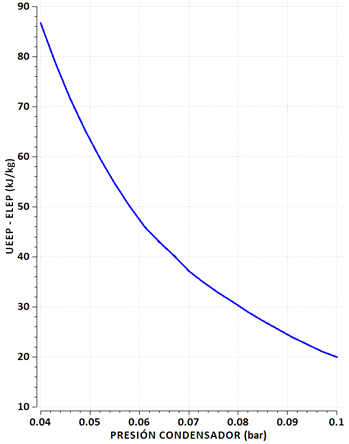THERMAL-BALANCE - Thermal Balance in Power Plants
Last Releases
4.0.6, January 2024
4.0.5, June 2022
4.0.4, May 2020
4.0.3, March 2019
Status
Internal simulation toolkit, not available for sale, only for consultancy and project development
Applications
Steady state thermal balance studies in typical power generating plants (Coal, Combined Cycle, Nuclear, Thermosolar, etc).
- Studies with slow dynamics where model boundary conditions change with time.
- Calculation of steady-state energy balances in different operating conditions in typical power generation plants (Coal, Combined Cycles, Nuclear, etc.).
- Identification of causes of loss of performance in power plants
- Cycle optimization and operating modes
- Study of the impact of modifications and anomalies on plant performance
- Dynamic simulation of the plant and plant systems due to changes in operating conditions or environmental conditions, for example:
- Transient analysis of the heat sink of a nuclear power plant.
- Analysis of the operating sequence in steam accumulators of a thermo-solar plant.
Description
The THERMAL-BALANCE toolkit is used to carry out steady state thermal balance studies in typical power generating plants (Coal, Combined Cycle, Nuclear, Thermosolar, etc). The toolkit also enables performing studies with slow dynamics where model boundary conditions change with time.
Features:
- The schematics generated with EcosimPro/PROOSIS are similar to the layout of the plant, which allows the user to easily identify any part of the model.
- Component formulation according to accepted codes (ASME, HEI, etc) including steady state and some dynamic behaviour and controls. Exsiting formulation and new components can be modified/developed by advanced users.
- The toolkit contains a wide range of ready-modeled components which cover all modelling needs of these types of systems, ie, pumps, compressors, valves, pipes, motors, heat exchangers, condensers, turbines, evaporators, electric generators, cooling towers, etc.
- Maximum flexibility in data input, variable initialization and presentation of results
- The toolkit is prepared to work not only with water, but also with air, oxygen, carbon dioxide, carbon monoxide, helium, argon, methane, propane, butane and sulphur dioxide. Users will also find it easy to add new fluids
Steady-State Thermal Balance of a Advanced High Temperature Reactor for Cogeneration
The THERMAL-BALANCE toolkit has been used for the thermal balance analysis of an Advanced High Temperature Reactor for Cogeneration.
The results of the cycle have been depicted using the EcosimPro/PROOSIS GSE feature (Graphical Simulation Environment). This makes it possible to show the main steady state results of each process line (pressure, enthalpy, mass flow and temperature) on the schematics diagram of the model.
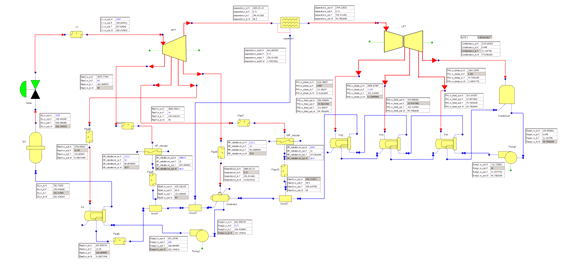
Model of a Nuclear Fuel Storage Pool and its Cooling
Although the THERMAL-BALANCE toolkit mainly applies to steady state analysis, the toolkit can also be used to study slow transients.
The system analysed in this example consists of two pumps that distribute water through three branches parallel to the three heat exchangers, returning to the pool once cooled. One of the two pumps and all three chillers are considered as being in operation, although a non-chilled bypass current is included.
This model can be used to evaluate the system behavior as a function of the heat load and the cooling conditions.
A pool level control has been included using components from the CONTROL library and a motor-operated valve that supplies the refueling flow.
The schematics diagram of the model is shown in the following figure.
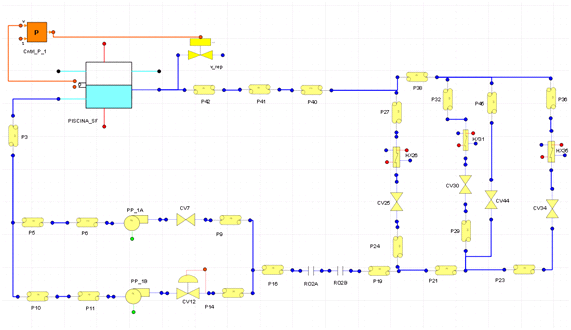
The aim of the study is to calculate the evolution of the water temperature in the pool caused by the heat load from the fuel. The scenario takes into account the variation of heat load from the fuel elements with respect to time, considering the theoretical curve of decay in output.
The following plots show the most important results from this study.
Mass flow through the refuelling valve
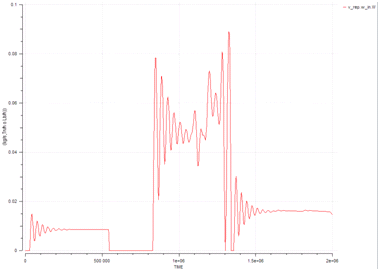
Controlled level in the pool
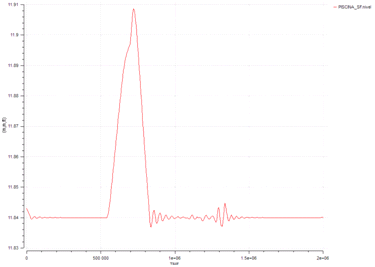
Pool inlet and outlet temperatures
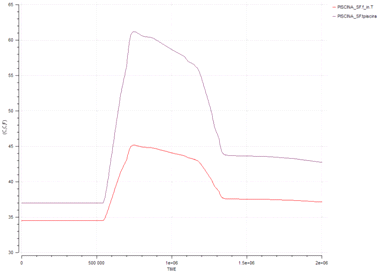
Sensitivity analysis of a thermal balance of a nuclear power plant for Megawatt Hunting studies
The electrical power generated by the plant for a given heat load often changes for different reasons that have a bearing on its performance. In the case of a nuclear power plant that operates at a constant heat load, a loss of performance becomes a loss of the generated electrical power.
Taking a 100% heat load as a basis, the purpose of this study is to calculate the parameters whose variation moves the generated electrical power away from its rated value.
The model developed can be used to analyse whether the reasons for generating power that is not of the rated value, at 100% load, are external to the correct operation of the plant (for instance: high temperature of the circulating water in summer) or whether they are caused by an operating problem (for instance: little moisture separation in the MSR and high steam consumption by the reheater). This type of model can be highly useful in the megawatt hunting studies.
A model has been developed with the THERMAL-BALANCE toolkit to calculate the heat balance of the nuclear power plant. This model has been connected to MS Excel so that engineers without knowledge of EcosimPro/PROOSIS can calculate cases, quickly present results graphically and analyse results with the capabilities of MS Excel. This interface is shown in the following figure

The model allows the influence of different conditions and operating parameters on power generation to be analysed, as in the following example:
- Pressure in the condenser
- Reduction in the heat transfer coefficient in the heaters
- Efficiency of the moisture separator
- Fraction of water carryover at the outlet of the steam generator (SG)
- Loss of efficiency in some turbine stages
- Losses through the seals in the turbine stages
- Increase in the consumption of the auxiliary steam
- Etc
For instance, an increase in the condenser pressure changes the expansion line end point (ELEP) and affects the exhaust losses of the low pressure turbine (difference between UEEP and ELEP).
The following figure shows the variation in the electrical power with the condenser pressure. The condenser pressure of the rated case is 0.067 bar.
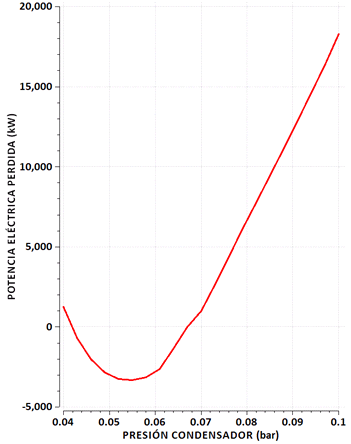
The following figure shows the losses at the exhaust of the LP turbine versus the pressure in the condenser.
